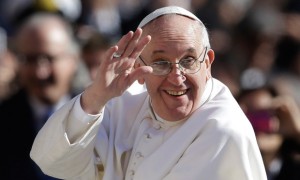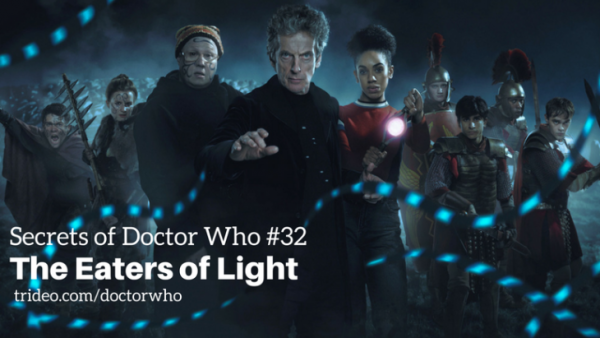
Charlie Gard is an eleven-month old baby in England. He has a rare genetic disorder known as mitochondrial DNA depletion syndrome.
According to press accounts, Charlie is terminally ill at this point. His parents have raised more than $1 million to try an experimental treatment to help him, but hospital officials—backed by British and European courts—have forbidden his parents to take him from the London hospital where he currently is.
Officials have also forbidden his parents to take him home to die.
According to the British tabloid newspaper, The Sun:
Charlie’s mum and dad say he is a “prisoner” in hospital and Great Ormond Street [hospital]’s treatment has been “inhuman”.
You can read more about the treatment controversy surrounding Charlie here.
Why are officials denying the wishes of Charlie’s parents?
According to their public statements, they believe that Charlie’s condition is too grave and that the proposed medical treatments are not in his interest (meaning, they would be too burdensome, too likely to be ineffective, or both).
Consequently, rather than undertake the treatments desired by his parents, hospital authorities state that it would be in Charlie’s best interests to allow him to die.
They therefore propose discontinuing the things keeping him alive.
What does Catholic moral theology hold about situations like this?
The Church does not have a teaching addressing Charlie’s specific condition, but it has articulated principles that address situations like this in general.
The usual obligation to use medical procedures to extend life does not apply when the treatments would be “heroic” or disproportional to the good to be achieved.
In other words, if the treatments would be too burdensome, too unlikely to succeed, or both, they are not obligatory.
Experimental treatments like the one proposed for Charlie typically are riskier than approved treatments—commonly involving both a higher burden on the patient (e.g., more side-effects) and lower chances of success.
Because of this, such experimental treatments generally are not morally obligatory.
If the treatment is not morally obligatory, what’s the controversy about?
Ordinarily, a patient would speak for himself regarding whether he wishes to receive such treatments.
However, in this case the patient is a baby and cannot do so. Therefore, the parents—by natural law—are the logical ones to make the decision.
Only if the parents are incapable of making a rational decision would it be warranted for others to step in and make the decision in their place.
Note the test required for intervention by others: It isn’t that the parents must make the correct decision. People can have a legitimate diversity of opinions on which medical procedures are warranted in a case. That’s why patients are often encouraged to seek “second opinions” from physicians.
The standard that must be met is that the parents aren’t capable of making a decision that is within the pale of reason. They must be making a patently irrational one before others should intervene.
In this case, the treatment proposed for Charlie has worked for others, indicating a rational hope it would work for him.
Consequently, the attempt by the hospital officials and the relevant courts to impose their will on Charlie, against his parents’ explicit wishes, appears a monstrous and inhuman overreach.
The refusal to let the parents take baby Charlie home to die (as if palliative care couldn’t be given in a home environment!) only twists the knife.
The way the situation has played out, it looks like an Orwellian, faceless bureaucracy is determined to kill this child against the reasonable will of the parents.
That bodes ill for all of us, given the statist and anti-life trends on the loose in Western culture.
What has the Catholic Church in the UK said about this situation?
Archbishop Peter Smith issued a statement which you can read here.
He expressed sympathy with the parents and reviewed some relevant moral principles.
Toward the end of his statement, Archbishop Smith said:
We do, sometimes, however, have to recognise the limitations of what can be done, while always acting humanely in the service of the sick person until the time of natural death occurs.
The statement as a whole was carefully balanced, but this sentence could come across as discouraging the parents’ efforts to save Charlie’s life.
A much more problematic statement was issued in the name of the Pontifical Academy of Life in Rome.
What did the Pontifical Academy of Life say about Charlie’s situation?
Archbishop Vincenzo Paglia, president of the academy, issued a statement which you can read here.
This statement also expressed sympathy for the parents. However, it went on to say:
The proper question to be raised in this and in any other unfortunately similar case is this: what are the best interests of the patient?
We must do what advances the health of the patient, but we must also accept the limits of medicine and, as stated in paragraph 65 of the Encyclical Evangelium Vitae, avoid aggressive medical procedures that are disproportionate to any expected results or excessively burdensome to the patient or the family.
Archbishop Paglia has mischaracterized what Evangelium Vitae says. It does not say that we should “avoid” such medical procedures. It says that refusing them is not the same thing as euthanasia. It says “one can in conscience refuse” such treatments, but not that one should or must do so.
Evangelium Vitae leaves open the question of what treatments can be used in an effort to preserve life. If a patient—or those who speak for him—feel it is appropriate to use aggressive or experimental treatments, that is not precluded by Evangelium Vitae 65.
Even more unfortunately, Archbishop Paglia continued:
Likewise, the wishes of parents must heard and respected, but they too must be helped to understand the unique difficulty of their situation and not be left to face their painful decisions alone.
Although this could be taken as a statement of abstract principle, in this context it comes across as a paternalistic statement regarding Charlie’s parents and how they “must be helped to understand the unique difficulty of their situation”—as if an archbishop in Rome were more familiar with it than the parents who are having to live the situation!
The statement was therefore widely criticized. It came across as out-of-touch, pastorally insensitive, and precisely the kind of thing that would drive hurting parents away from the Church.
Fortunately, Pope Francis walked it back.
What did Pope Francis say?
According to Crux:
Wading directly into a charged moral and political debate in the UK, and also appearing to recalibrate an earlier statement from the head of his own Pontifical Academy for Life, Pope Francis on Sunday expressed hope that the desire of 10-month-old Charlie Gard’s parents “to accompany and care for their own child to the end” will be respected.
“The Holy Father follows with affection and commotion the situation of Charlie Gard, and expresses his own closeness to his parents,” reads a statement issued by Greg Burke, the pope’s spokesperson.
“He prays for them, wishing that their desire to accompany and care for their own child to the end will be respected.”
Pope Francis also Tweeted:
To defend human life, above all when it is wounded by illness, is a duty of love that God entrusts to all.
Following this, the pediatric hospital Bambino Jesu (“Child Jesus”) in Rome—which also treats the popes—offered to treat Charlie.
American President Donald Trump also offered to facilitate treatment in America, saying:
If we can help little #CharlieGard, as per our friends in the U.K. and the Pope, we would be delighted to do so.
Thus far British officials have sent mixed signals regarding whether the parents will be allowed to take Charlie from the hospital where he is currently being held.
Let’s all pray for this horrific situation.












